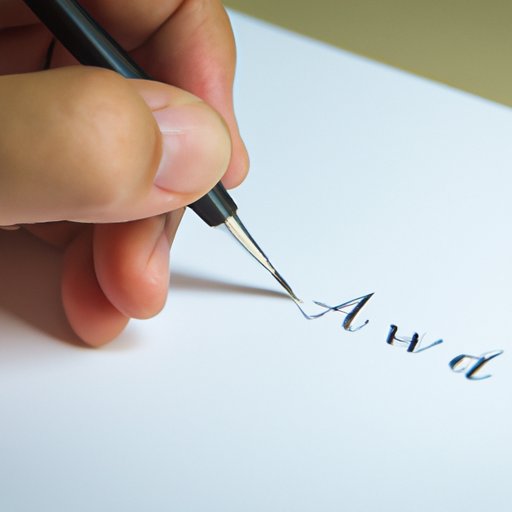Introduction
Letter writing is an important skill that can be used in many different contexts. Whether you’re writing a formal business letter or a personal note to a friend, it’s important to know how to craft a good letter. Knowing how to start a letter is especially important, as it sets the tone for the rest of the document. In this article, we’ll explore the best practices for starting a letter, from outlining the purpose to using an appropriate greeting.
Outline the Purpose of Your Letter
Before you begin writing your letter, take some time to think about what you’re trying to accomplish. Are you applying for a job? Requesting information? Trying to resolve an issue? Understanding the purpose of your letter will help you stay focused and organized as you write. Once you have a clear idea of what you want to say, you can start drafting your letter.

Introduce Yourself and Establish a Connection
The first few sentences of your letter should include your name and a brief explanation of why you’re writing. If you’re writing to someone you don’t know, explain how you heard about them or why you’re contacting them. If you’re writing to someone you know, mention how you met or why you’re writing to them now.
Maintain a Formal Tone
When writing a formal letter, it’s important to keep your language professional. Avoid using contractions and slang, and use full words instead. Additionally, try to avoid using overly flowery language, as this can come across as insincere. Instead, strive for a straightforward, courteous tone.
Choose an Appropriate Greeting
The greeting you choose will depend on who you’re writing to and the level of formality required. Traditional salutations like “Dear [Name]” or “Dear [Title] [Name]” are always appropriate. For more informal letters, you may opt for something like “Hi [Name]” or “Hello [Name].” If you’re unsure, err on the side of caution and stick to a traditional greeting.

Get to the Point Quickly
Once you’ve introduced yourself and established your purpose, it’s time to get to the point. Make your main point early on in the letter, then follow up with details and evidence to support your argument. This will help ensure that the reader understands your message and doesn’t become confused or bored by long-winded explanations.
Close Your Letter Professionally
Your closing should match the tone of the rest of your letter. You may want to thank the reader for their time, suggest further action (like requesting a meeting or providing additional information), and sign off respectfully. Examples of polite closings include “Sincerely,” “Kind regards,” and “Best wishes.”
Conclusion
Starting a letter can be intimidating, but with the right tips, you can make sure your letters are clear, concise, and professional. Outline the purpose of your letter, introduce yourself and establish a connection, maintain a formal tone, choose an appropriate greeting, get to the point quickly, and close your letter professionally. With practice, you’ll be able to write effective letters in no time!
(Note: Is this article not meeting your expectations? Do you have knowledge or insights to share? Unlock new opportunities and expand your reach by joining our authors team. Click Registration to join us and share your expertise with our readers.)
